How to Grow Beans for Beginners
You can use this guide to help you learn how to grow beans for beginners and tips on how to improve your crop year after year. Even if you have grown them before, I hope you will find some tips to make this year’s harvest your best.
Gardening 101 in a way that will fill your summer garden with amazing vegetables by getting best practices on how to to plant, water, weed, and harvest a crop of beans this growing season.
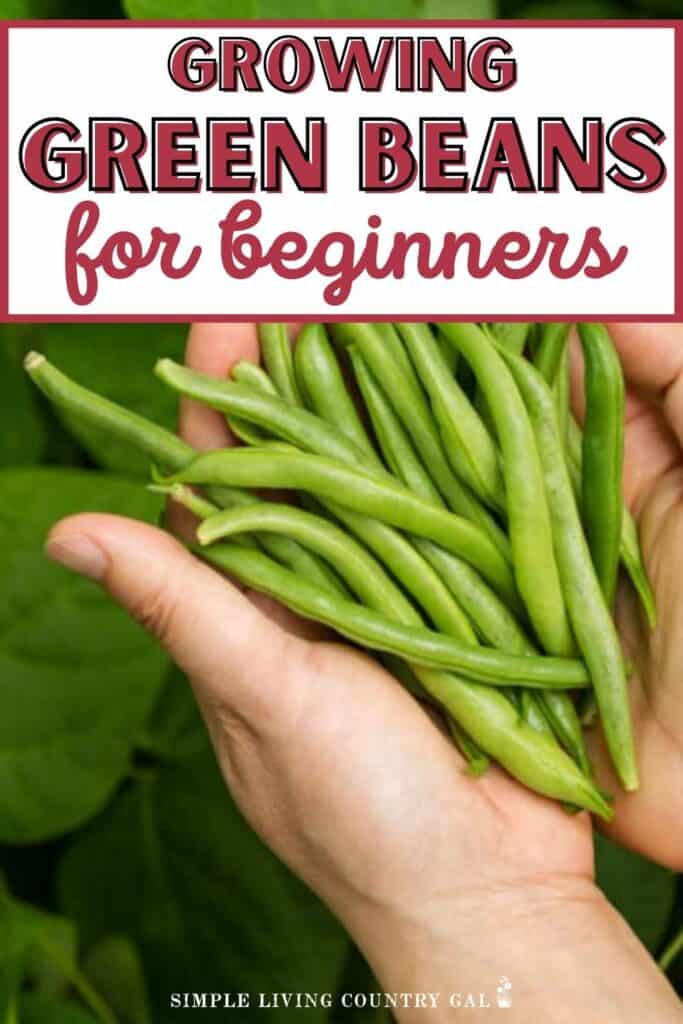
I am not a fan of beans. I didn’t like them as a kid and I still do not like them as an adult. I even tried cooking them with bacon, because you know, bacon makes everything taste better, but still no good.
The problem is, my husband loves them.
So much so that I still need to add a few plants every year to my summer garden plans. That is one of the nice things about growing your own vegetable garden; you get to make the rules. And even though I am not a fan of those slender green veggies, I can still tuck a few here and there to keep my husband happy.
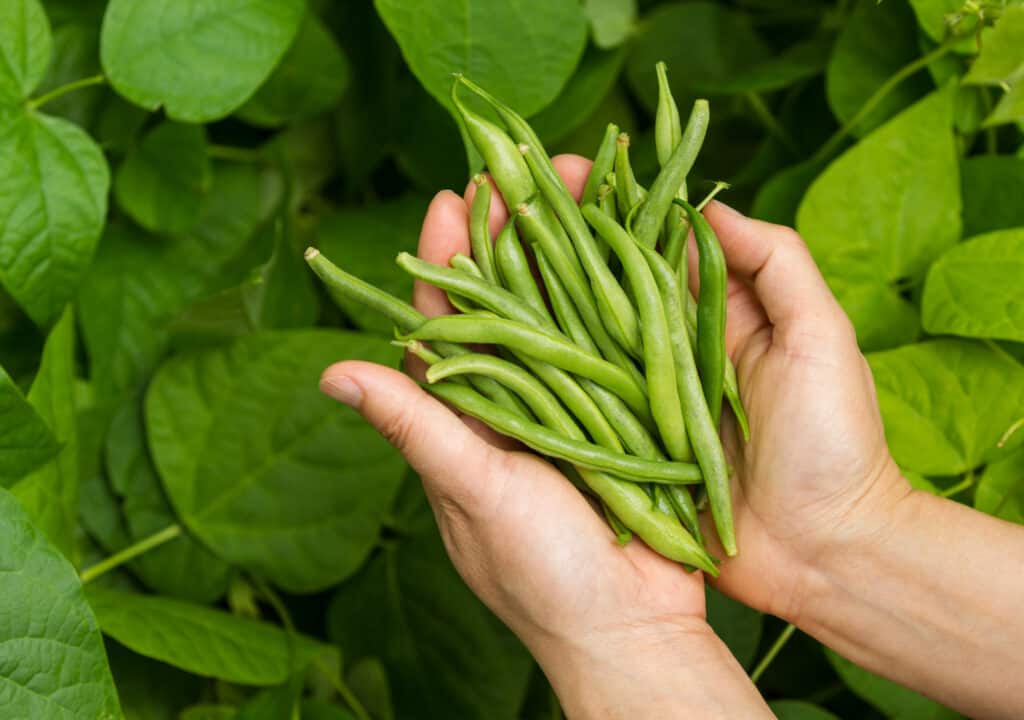
Beans are a great addition to any garden and are fairly easy for beginner gardeners to grow. They provide lots of fiber and nutrients to keep your family healthy, and with so many varieties, you’re sure to find one that your family will enjoy.
There’s not much trial and error with bean seeds, if you plant them, they’re almost certain to grow. But before you start planting your seeds, you should keep a few things in mind.
What to Know when growing green beans
There are two main types of beans, pole beans, and bush beans. Understanding the difference will help you grow a full, healthy harvest. Knowing which kind you’re going to grow before planting the seeds will also help you find the best spot in your garden.
Pole Beans
Pole beans grow vertically, so you’ll need a support system, like a trellis or fence. This is a bonus for any garden because it allows you to tuck plants into small areas using up your garden space most efficiently.
You can expect the growing season to last 6-8 weeks before harvesting. This timeline will help you better plan when to put your seeds into the ground.
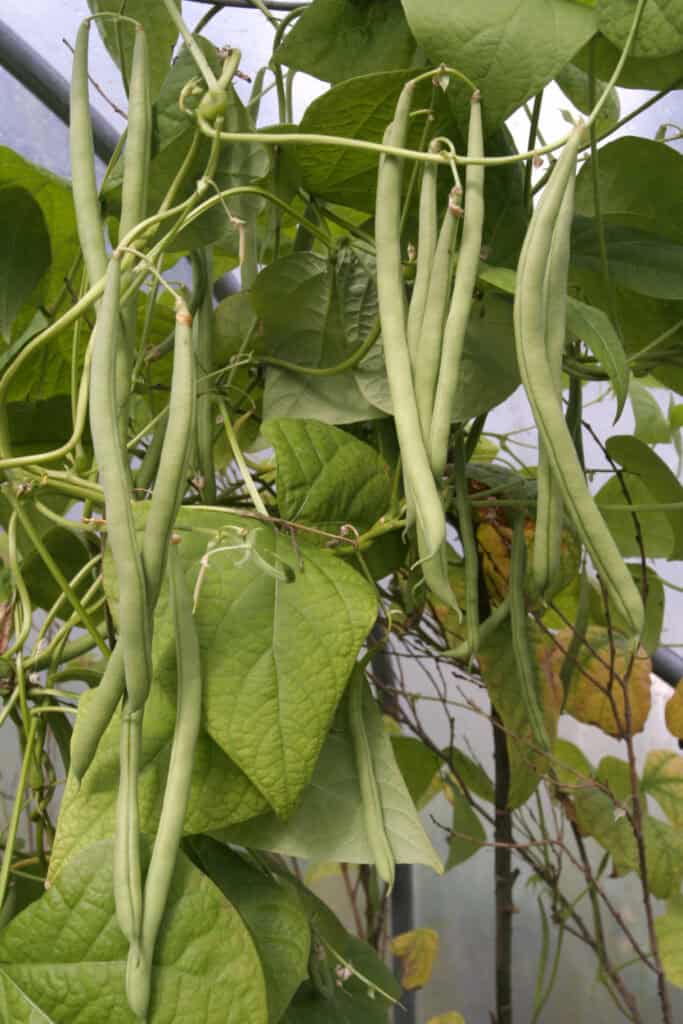
Bush Beans
Bush beans grow in a more compact space, about 2 feet high, making them a great option for raised garden beds. They produce a plentiful harvest for about 3-4 weeks after they mature, with a maturation time that is a little shorter than pole beans.
They’re a good choice if you want to harvest all at once to freeze or can for later.
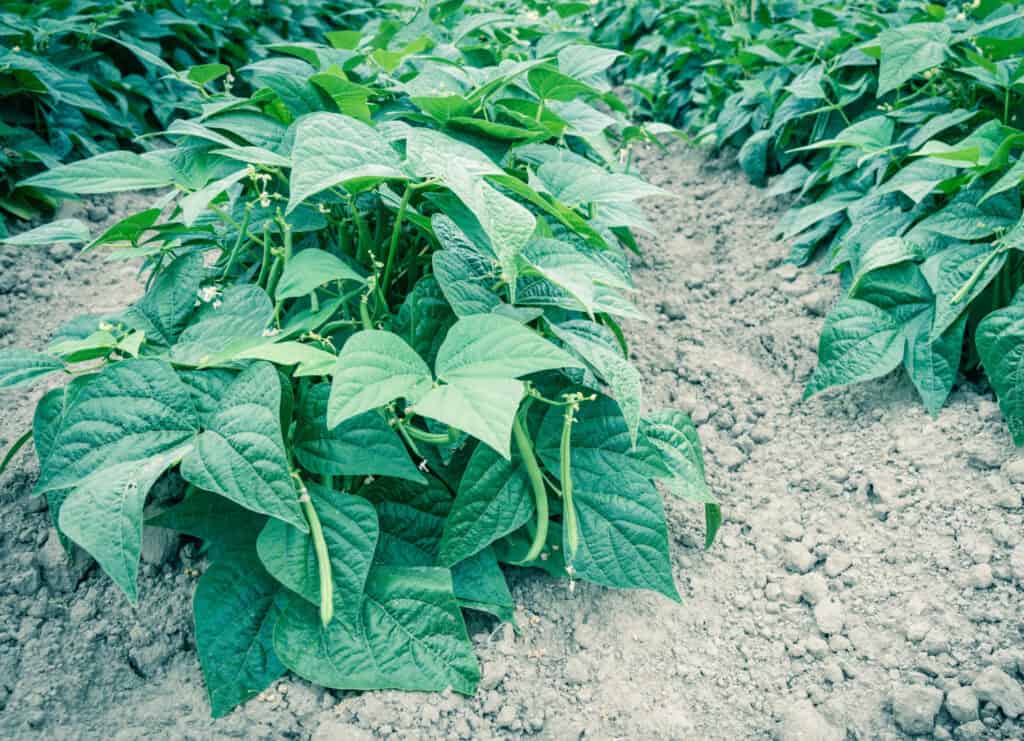
What You Need to Grow Beans
Before planting, you’ll need to decide what type of beans you want to grow so you can plan for a support system if necessary. If you’re going to plant pole beans, you’ll need to make or purchase some support system, such as a trellis, fence, or bean tower.
If purchasing is not in the budget, you can also DIY a support that will do just as well in your garden. This is a great option if you have a supply area in your barn, garage, or a stash out in your yard.
I love to use what we have before heading off to buy and in a garden, you can make just about any support with scraps of wood, small sections of steel fencing, or metal. Just be sure it is sturdy so it can withstand the weight of your plants and the full growing season.
Fence panels work great in a garden to give support to peas, beans, and even tomato plants.
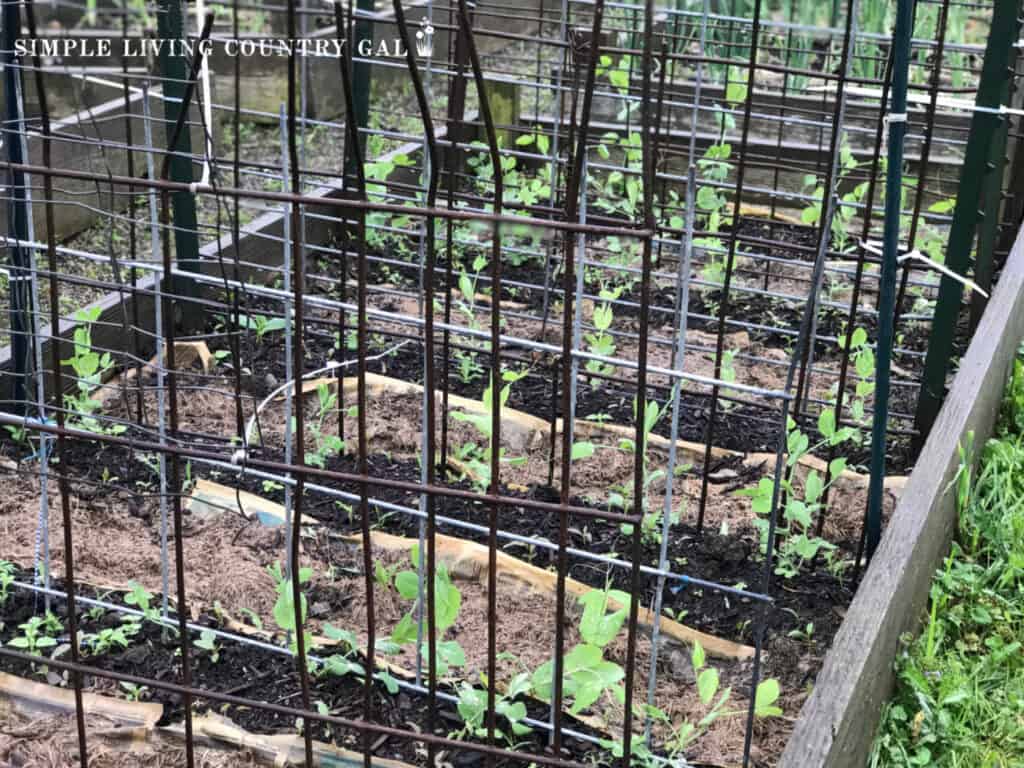
If you’re going to plant bush beans in a raised bed, you’ll want to make or purchase your supports and install them first. This will help your plants “learn” the system as they grow and use it as stable support right off. Trying to “teach” a plant to use supports by manually moving it around can cause damage and stunt your growing time.
Another step to do before planting is choosing the area that will support a healthy growing season. Look for a spot that has full sun as bean plants require 6-8 hours of full sun a day for the best growth.
Lastly, you’ll want to test your soil’s pH before planting. Beans grow best in slightly acidic soil with a pH between 6 and 7. If you are unsure of your soil’s pH, you can use a soil tester to get a base reading allowing you to adjust things from there.
SLCG PRO TIP: Gardening can be so fickle, and knowing what works in your area and what doesn’t is really the key to getting better and better each year. If you are looking for the insider secret to an amazing garden, then this is it: Get yourself a planner where you can keep notes.
Each garden is unique, meaning you need a customized book for where you live, what your weather is like, what pests are prominent in your area, and how to deal with them. Keep notes throughout each season, and I promise you will improve year after year!
READ: How to Use a Garden Planner
How to Grow Beans in a Garden
Beans are a warm-season crop and grow quickly, they’ll mature and be ready to harvest in about 2 months or less. A single plant will produce about 120 beans during the entire growing season. Bean plants are pretty foolproof, once planted, the majority of the seeds will sprout, and there’s no need to thin them out as long as you have them planted with enough distance between them.
Seeds or Plants
There’s no need to start bean seeds indoors, they’ll sprout and grow quickly enough meaning you do not need to jump-start their growing time. Another reason why sewing seeds directly into the ground is the best approach is that their roots can become damaged with replanting. Final word: Plant seeds directly in the ground after the last frost.
Temperature
Beans are a warm season crop and don’t handle cold temperatures well so be sure to plant them after the last frost of the season. Because they grow and mature quickly, you won’t need to worry about planning around the weather for a long growing season.
Be sure your soil has reached at least 60 degrees before planting; you can easily test that with a soil thermometer or wait until you’ve had several warm days.
Sun
Bean plants require full sun in order to produce their biggest harvest. Keeping that in mind, you will want to plant in an area that receives at least 8 hours of direct sunlight most days. You can determine the best spot ahead of time by keeping a sun journal and noting the number of hours various areas of your garden receive each day.
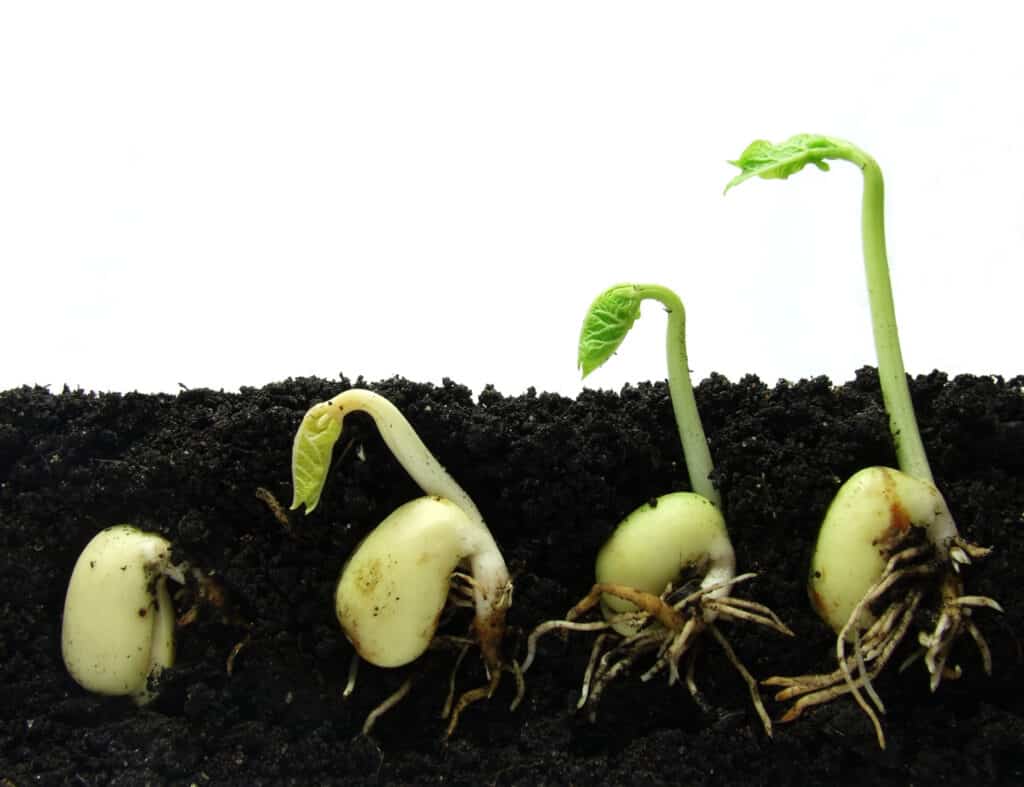
Soil
Your soil’s pH level is very important to a healthy, hearty crop. Bean plants prefer acidic soil, with a pH between 6 and 7. Use a soil pH tester to determine your soil’s pH level before planting.
About two weeks before planting, prepare the soil by loosening it about 7-8 inches deep and breaking up any clumps of soil with your hands. This will also help your soil warm up faster after the last frost so that you can plant sooner.
Watering
Bean plants need about an inch of water each week. It’s important to water near the base of the plant and avoid splashing soil onto the leaves as this can lead to soil-borne diseases.
Sticking your index finger into the soil about an inch deep is the best way to determine if the plants need watering. If the soil is moist, there’s no need to water. But if the soil is dry, your bean plants need a steady and good watering.
Fertilizing
Bean plants are light feeders and don’t require much fertilizer. You can easily give them all the nutrients they need by mixing a light fertilizer into the top couple of inches of soil when you plant your seeds. There’s no need to fertilize again during the remainder of the growing season.
How Many Seeds to Plant
To make sure you grow a healthy harvest for eating fresh, canning, and/or freezing, you’ll want to plant enough bean plants. For each member of your family, you’ll want 5-10 bush bean plants per person and 3-5 pole bean plants per person.
SLCG PRO TIP: Note how many plants you started with and what your harvest numbers were. This will help you to determine what adjustments if any, are needed for next year’s growing season.
Planting Beans
Before planting, soak your seeds in a shallow container of warm water overnight. This will help them to sprout more quickly once they are in the ground. Before planting, drain the water and plant as usual.
Square Foot Garden Planner+Guide

Spacing
When it comes to planting your seeds it will depend on the type of bean plant you are growing.
Bush Beans – Plant seeds 2-4 inches apart in rows that are 2-3 feet apart.
Pole Beans – Seeds can be planted in rows or hills. Seeds should be planted 6-10 inches apart in rows that are 3-4 feet apart. Don’t forget to provide a support system like we talked about above, for pole beans.
Depth
Bean seeds don’t need to be planted deep. A half-inch to an inch deep is all you need for healthy growth. Cover the soil with a light layer of sand, compost, or mulch to prevent soil crusting.
Get tips on how to use mulch to grow a healthier, self-sufficient garden.
Growing Tips for Beans
You can expect bush beans to mature in about 50-55 days and pole beans in about 60 days. After that time they’re ready to harvest and enjoy. There are a few things you can do during the growing season to encourage a healthy and hearty harvest.
- Don’t plant seeds in wet soil, it can lead to seed rot before they have a chance to sprout. Soaking your seeds overnight will provide plenty of moisture for planting. Then plant in dry, warm soil.
- Don’t work on your bean plants when the leaves are wet, you can easily spread foliar diseases. Instead, make sure the leaves are fully dry from rain or watering before you work on them.
- Bean leaf beetles love the seedlings of bean plants. Prevent them from attacking by laying garden fabric over your plants. If you notice just a few beetles, you can remove them by hand and place them in a jar of soapy water, keeping the population under control.
- Remember that pole beans will need some kind of support as they grow vertically. A trellis, fence, or bean tower are your best options.
DECORLIFE 4-Pack Potato Grow Bags, 7 Gallon Thick Fabric Pots for Plants, Harvest Windows & Sturdy Handles, Labels Included, 4 Colors

- Bush beans grow best in a raised bed garden. If you’re able to provide that option, it will allow you to replant in the same area year after year.
- Once your bean plants start to mature, harvest them often and remove any overripe beans. This will help the plants produce longer.
- Bush beans will eventually stop producing. When this happens, remove the entire plant; it can be added to your compost pile. Pole beans will continue to produce until the first frost kills the plant.
- Pests and diseases can live in the soil for years so plant your bean plants in a different area each year to prevent them from attack. If you’re planting in a raised bed, be sure to remove all the soil after the growing season and clean out the bed before planting again. This will help prevent the spread of pests and diseases.
- Don’t plant beans near chives, leeks, garlic, and onions. They exude an antibacterial that kills off the bacteria in the bean plant roots and keeps them from absorbing nitrogen. Pole beans shouldn’t be planted near beets, kale, broccoli, cabbage, or cauliflower.
- Bacterial diseases can affect the growth of bean plants. These include common blight, southern blight, wilt, and brown spots. Leaves will look wilted or blotchy and pods will be shriveled. This can be avoided by not planting in the same area for a few years or placing fresh soil in a raised bed.
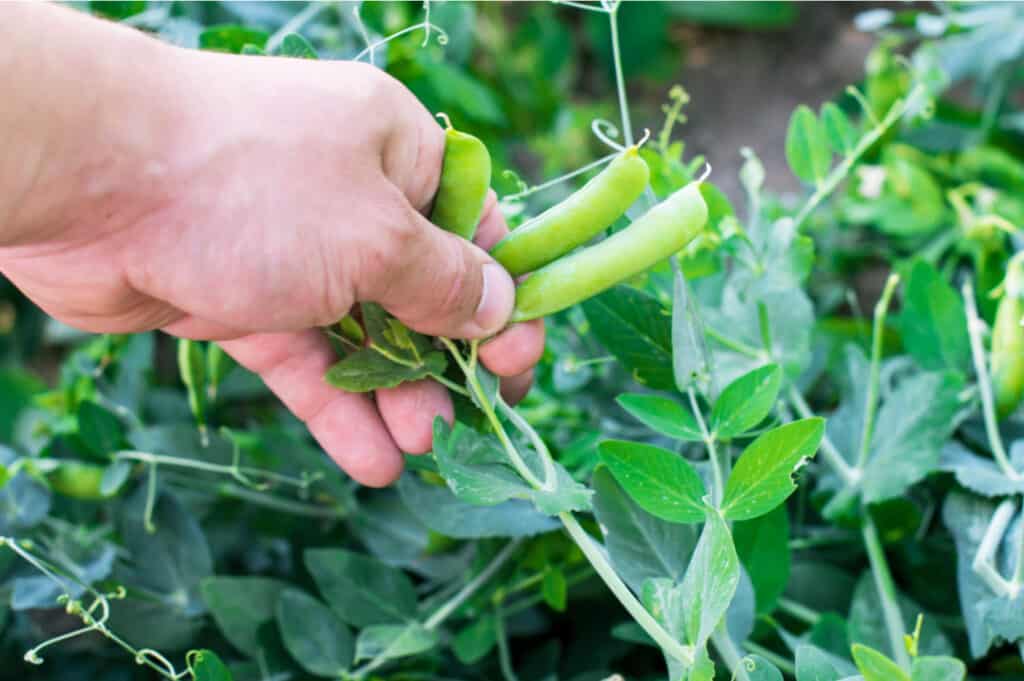
Deter Rabbits and Deer
While these animals are cute and soft, they can wreak havoc on your garden. And they love green plants, which include bean plants. These tips can help you keep these adorable critters away from your plants.
- Place a wire fence around your garden to keep them out.
- In place of fencing, you can place wire cylinders around the plants that are most enticing to rabbits and deer.
- Use natural deterrents in your garden. These can be found in a garden center and won’t harm your plants or animals.
- Choose resistant plants. There are some plants that rabbits and deer aren’t fond of. If you plant resistant plants, they won’t be encouraged to snack on your garden’s plants.
When to Harvest Beans
The fruits of a bean plant will start to split open at maturity. The pods can be left on the plant a bit longer to fully dry if you’d like. You can handpick bean pods and allow the plant to continue producing or you can cut the whole plant at the base.
Not all plants will mature at exactly the same time so it’s best to handpick them as they mature then check back daily for new, fully matured beans.
To dry your beans, simply leave them on the plant to fully mature. The pods and beans inside will become dry. Just remember that you’ll need to cook dry beans longer to soften them again.
Once the plants stop producing, you can cut the whole plant down and add it to your compost pile. If you planted in the ground, pack your soil and look for a new planting spot for the next year. If you planted in a raised bed, dump the soil and prepare it for a fresh planting.
SLCG PRO TIP: Since soil-born diseases and pests can quickly ruin a garden, do not compost any plants or plant cuttings that are questionable health-wise.
For this reason, it is best to have two piles of debris. One close to your garden that you fill with healthy additions and one much further away for any that are questionable.
How to Store Beans
Beans store best in a cool, dark, dry area. Keep them in an airtight container which will keep humidity and moisture out. If the beans are dried, you can expect to store them for at least a year, often times more.
Beans are a great crop for canning, freezing, or pickling. These methods will allow you to enjoy beans all year long and quickly add them to recipes without having to take the time to soak them first.
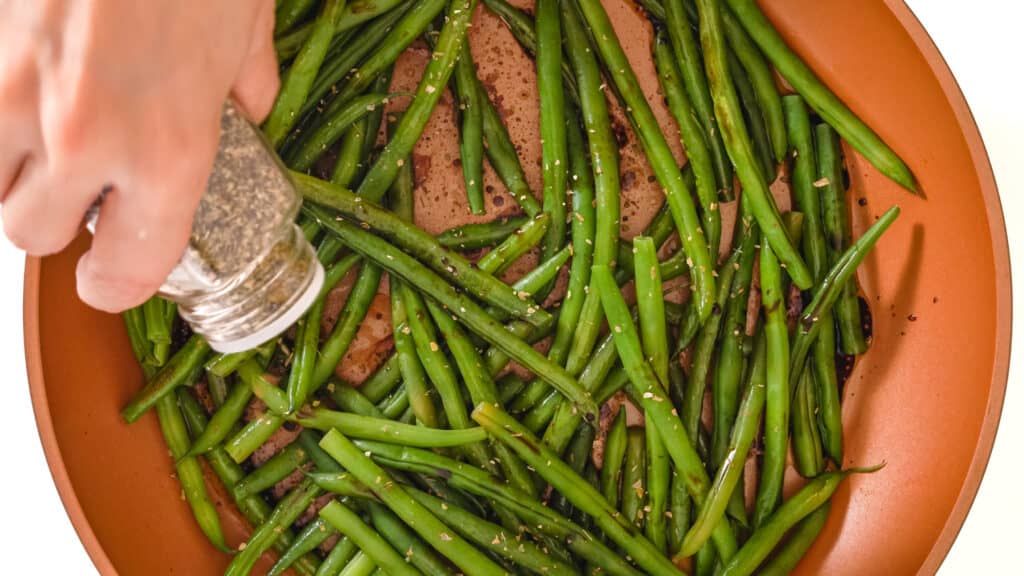
Enjoy!
Beans are great right out of the garden, cooked with sea salt and pepper, or used in a variety of dishes.
Now that you know how to grow beans in your garden and you see that they’re a perfect crop for beginner gardeners, you’re all set to grow healthy plants and enjoy the fruits of your labor all year long.
Bean plants are one of the easiest plants to grow, making them perfect for beginner gardens. And pole beans can grow in a much smaller space than bush beans, making them a great choice for small gardens. Beans are nutrient-rich and full of fiber, making them a great choice for any family. With so many options for preparing them, you can enjoy them in a variety of ways every week.
If you’re ready to grow your garden, plant some beans for a healthy, quick-growing crop.
MORE GARDENING RESOURSES:
- Stop Weeds with This One Tip
- 10 Tips for Beginner Gardeners
- Turn Crappy Clay Soil into a Lush Garden
How to Grow Beans

How to grow biggest beans in your own backyard that are great for a healthy side dish or to add some flavor to your latest dinner! How to grow beans step by step, from planting to harvest.
Materials
- Bean Seeds
- Water
Tools
- Garden or Garden Containers
- Rake
- Shovel
- Trellis or Fence (for Pole Beans)
Instructions
- Plant bean seeds about 1/2"-1" deep, and cover with a light layer of sand, compost, or mulch to prevent soil crusting. Make sure it is in an area with at least 8 hours of sunlight per day.
- Bush Beans – Plant seeds 2-4 inches apart in rows that are 2-3 feet apart.
- Pole Beans – Seeds can be planted in rows or hills. Seeds should be planted 6-10 inches apart in rows that are 3-4 feet
apart. Don’t forget to provide a support system like we talked about above, for pole beans. - Water often with about an inch of water per week.
- The fruits of a bean plant will start to split open at maturity. You can handpick bean pods and allow the plant to continue producing or you can cut the whole plant at the base.
- To dry your beans, simply leave them on the plant to fully mature. The pods and beans inside will become dry. Just remember that you’ll need to cook dry beans longer to soften them again.
- Beans store best in a cool, dark, dry area. Keep them in an airtight container which will keep humidity and moisture out. If the beans are dried, you can expect to store them for at least a year, often times more.
Notes
- Bean plants are light feeders and don’t require much fertilizer. You can easily give them all the nutrients they need by mixing a light fertilizer into the top couple of inches of soil when you plant your seeds. There’s no need to fertilize again during the remainder of the growing season.
- Bean plants are pretty foolproof, once planted, the majority of the seeds will sprout, and there’s no need to thin them out as long as you have them planted with enough distance between them.
Recommended Products
As an Amazon Associate and member of other affiliate programs, I earn from qualifying purchases.
-
Green Bean Seeds for Planting - Provider - Bush Bean - 50 Seeds - Heirloom Non-GMO Vegetable Seeds for Planting
-
Sow Right Seeds - Contender Bush Bean Seeds for Planting - Non-GMO Heirloom Packet with Instructions to Plant an Outdoor Home Vegetable Garden - Stringless Variety - Abundant Harvest, Great for Kids
-
Reotemp 12 Inch Soil & Compost Thermometer with Digital Composting Guide, 32-178 Fahrenheit and Celsius









